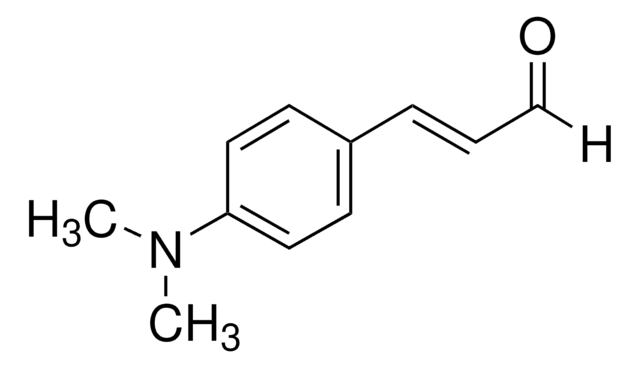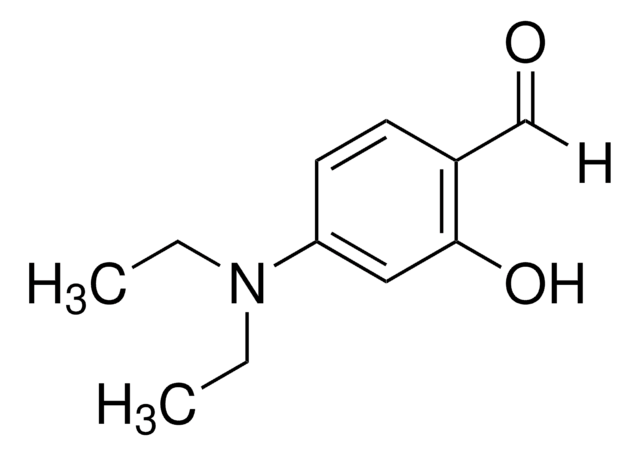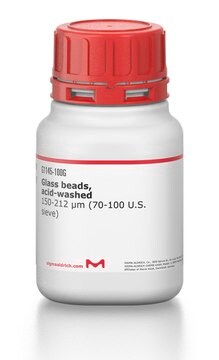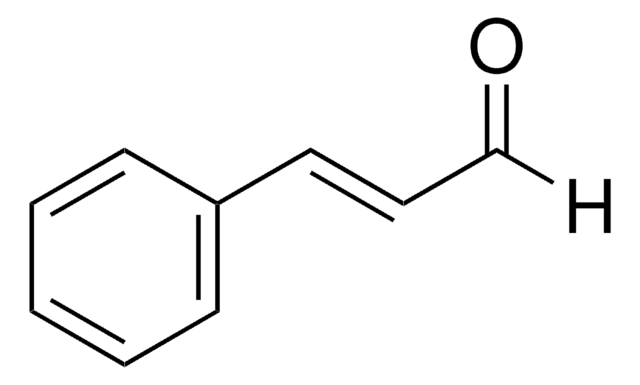8.22034
4-(Dimethylamino)-cinnamaldehyde
for synthesis
Synonym(e):
4-(Dimethylamino)-cinnamaldehyde
About This Item
Empfohlene Produkte
Qualitätsniveau
Form
powder
mp (Schmelzpunkt)
135-138 °C
Lagertemp.
2-30°C
InChI
1S/C11H13NO/c1-12(2)11-7-5-10(6-8-11)4-3-9-13/h3-9H,1-2H3/b4-3+
InChIKey
RUKJCCIJLIMGEP-ONEGZZNKSA-N
Anwendung
<li><strong>High-resolution imaging of plant tissues:</strong> 4-dimethylaminocinnamaldehyde (DMACA) is used as a PA-specific fluorescent dye that allows localization of PAs at high resolution in cell walls and inside cells using confocal microscopy, revealing features of previously unreported wall-bound PAs (Chowdhury et al., 2022).</li>
<li><strong>Chromogenic reagent for dietary supplements:</strong> DMACA serves as a chromogenic reagent in a microplate spectrophotometric method, used for the analysis of indole-3-carbinol in dietary supplements, demonstrating its utility in enhancing the accuracy of supplement analysis (Chaisiwamongkhol et al., 2022).</li>
<li><strong>Development of fluorescent chemosensors:</strong> Utilized in the synthesis of the chemosensor NBF, which is employed for the detection of cyanide ions (Gao et al., 2022).</li>
</ul>
Hinweis zur Analyse
Schmelzbereich (unterer Wert): ≥ 137 °C
Schmelzbereich (oberer Wert): ≤ 140 °C
Identität (IR): entspricht
Signalwort
Warning
H-Sätze
Gefahreneinstufungen
Aquatic Chronic 2 - Eye Irrit. 2 - Skin Irrit. 2 - STOT SE 3
Zielorgane
Respiratory system
Lagerklassenschlüssel
11 - Combustible Solids
WGK
WGK 3
Flammpunkt (°F)
Not applicable
Flammpunkt (°C)
Not applicable
Analysenzertifikate (COA)
Suchen Sie nach Analysenzertifikate (COA), indem Sie die Lot-/Chargennummer des Produkts eingeben. Lot- und Chargennummern sind auf dem Produktetikett hinter den Wörtern ‘Lot’ oder ‘Batch’ (Lot oder Charge) zu finden.
Besitzen Sie dieses Produkt bereits?
In der Dokumentenbibliothek finden Sie die Dokumentation zu den Produkten, die Sie kürzlich erworben haben.
Unser Team von Wissenschaftlern verfügt über Erfahrung in allen Forschungsbereichen einschließlich Life Science, Materialwissenschaften, chemischer Synthese, Chromatographie, Analytik und vielen mehr..
Setzen Sie sich mit dem technischen Dienst in Verbindung.







